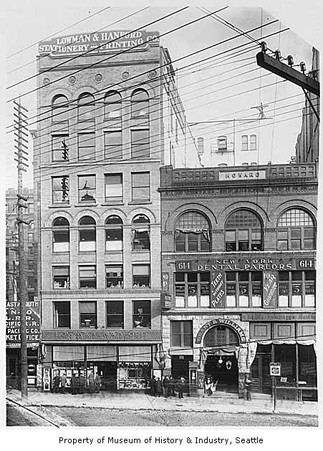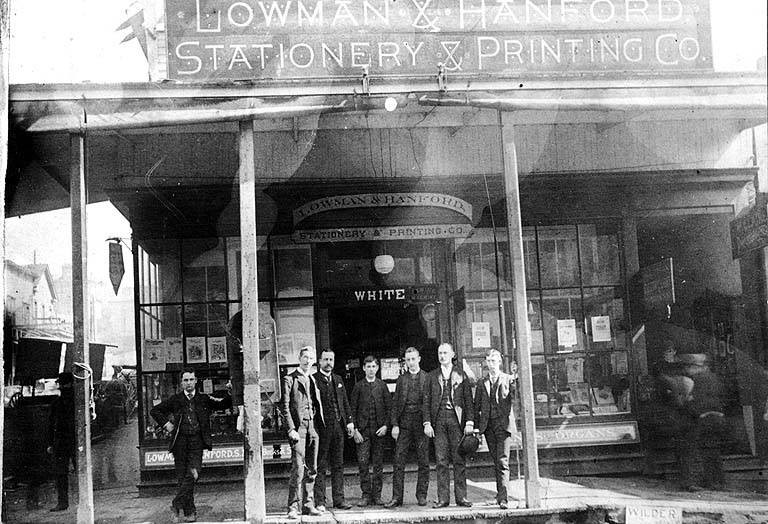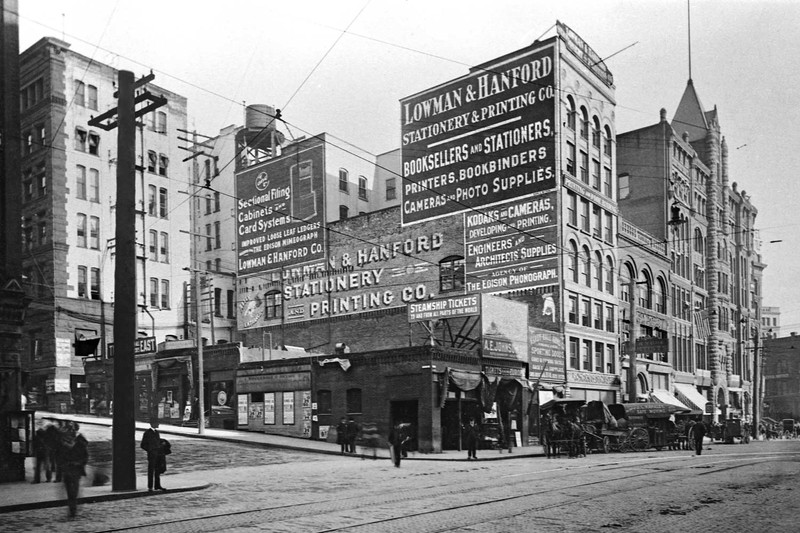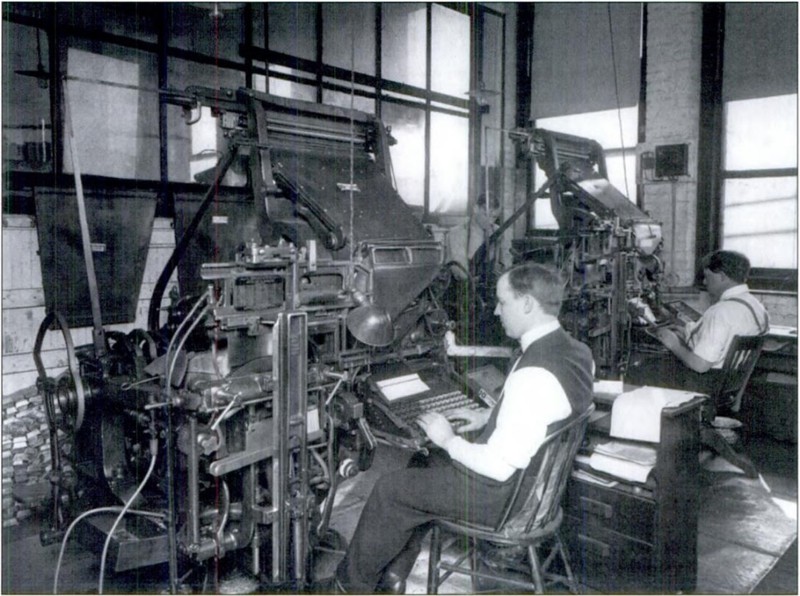Lowman & Hanford Printing Co. Building (1890)
Introduction
Text-to-speech Audio
Located in the Pioneer Square Historic District, the Lowman & Hanford Printing Company was founded by James Lowman and Clarence Hanford, two of Seattle's early business and civic leaders. Large presses in the building printed all of the city's newspapers, until the Great Fire of 1889 swept through Seattle. After the fire, the city quickly began to rebuild. Lowman and Hanford commissioned a new company building on First Avenue, along with a second building on Washington Avenue. While the company primarily advertised itself as a printing facility and stationary retail business, it also sold books, typewriters, sewing machines, pianos, and organs. Ownership changed several times during the 20th century, with the company eventually becoming The Ligature, a printing and engraving business, with facilities in both Seattle and Los Angeles. In 2006, The Ligature closed its Seattle facility, marking an end to the company's historic ties to the Pacific Northwest.
Images
The Lowman & Hanford Building, circa 1899

Lowman & Hanford Stationary and Printing Co. was established in 1885

Lowman & Hanford Stationary & Printing Co. also sold typewriters, sewing machines, organs, and pianos

Printing presses at the Lowman & Hanford Co.

Backstory and Context
Text-to-speech Audio
In 1882, the Lowman & Hanford Stationary and Printing Company was founded in Seattle by James Lowman and Clarence Hanford, two of the city's 19th-century business and civic leaders. Early on after the establishment of the business, the company held contracts to publish all of the city's newspapers, until the Great Fire of 1889 swept through the city and the company's facilities burned down. Similar to many of Seattle's early entrepreneurs, Lowman and Hanford were determined to persevere. Following the fire, they commissioned the architect Emil DeNeuf to design a new headquarters for their company, and in 1890 they moved into the new building on First Avenue near Cherry Street.
Around this time, Lowman and Hanford expanded their business to include bookbinding and bookselling. They also commissioned an additional company building, known as the Washington Park Building, near the intersection of Washington Street and Railroad Avenue (later renamed Alaskan Way). In 1897, Lowman and Hanford again diversified their business through the sale of photography equipment and other technological supplies to prospective gold miners heading north to Canada's Yukon and to Alaska during the Klondike Gold Rush. As the company continue to grow during the early 20th century, it further expanded to include a wider range of goods, such as typewriters, sewing machines, pianos, and organs.
During the 1900s, the company changed hands several times and was renamed, first becoming the L&H Printing Co. and then the L&H Engraving Co. It was finally renamed The Ligature, after new owners purchased the business in 1995. The Ligature operated printing facilities in both Seattle and Los Angeles. Its high-profile customers included the Boeing Company and the University of Washington, for which it printed letterhead stationary. In 2006, however, The Ligature decided to close its Seattle facility. A handful of employees relocated to the Los Angeles offices, marking an end to the company's historic ties to the Pacific Northwest.
The 1890 Lowman & Hanford Stationary and Printing Company Building has been preserved as part of the Pioneer Square-Skid Row Historic District. This district marks Seattle's original downtown commercial area, which dates back to the 1850s. It includes a large quantity of brick buildings constructed in the Romanesque Revival style during the late 1800s in response to the Great Fire. After the devastating conflagration, the city began rebuilding quickly and from brick, replacing many previous wooden structures. In 1970, Pioneer Square was designated a local preservation district by the City of Seattle, as well as a National Historic District. Today, trendy shops and restaurants along tree-line streets inhabit the buildings preserved for their historic character.
Sources
Eaton, Nick. "Engraver signs off in Seattle after 124 years", Seattle PI. July 19th, 2006. Accessed July 20th, 2023. https://www.seattlepi.com/business/article/engraver-signs-off-in-seattle-after-124-years-1209383.php.
Keniston-Longrie, Joy. Seattle's Pioneer Square. Images of America. Charleston, SC. Arcadia Publishing, 2009.
"Lowman & Hanford Building", Seattle Now and Then. Accessed July 19th, 2023. https://pauldorpat.com/archivepage/seattle-now-then-lowman-and-hanford/.
"Lowman & Hanford Company Records, 1894-1955", Archives West, Orbis Cascade Alliance. Accessed July 19th, 2023. https://archiveswest.orbiscascade.org/ark:/80444/xv75258.
"Lowman & Hanford Building, Seattle, ca. 1899", University of Washington Libraries, Digital Collections. Accessed July 20th, 2023. https://digitalcollections.lib.washington.edu/digital/collection/imlsmohai/id/436%3f.
University of Washington Libraries, Digital Collections / Museum of Culture & Industry
University of Washington Libraries, Digital Collections / Museum of Culture & Industry
Courtesy of Michael Cerelli
University of Washington Libraries, Digital Collections / Museum of Culture & Industry
